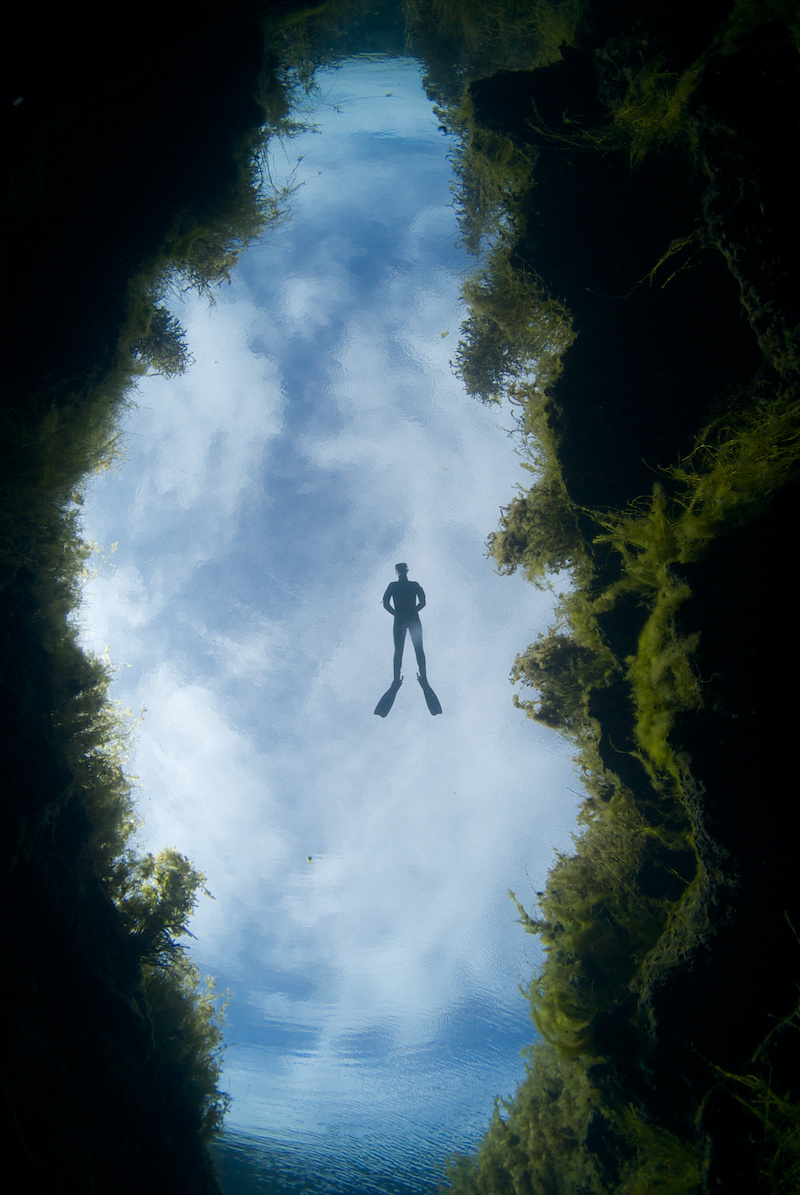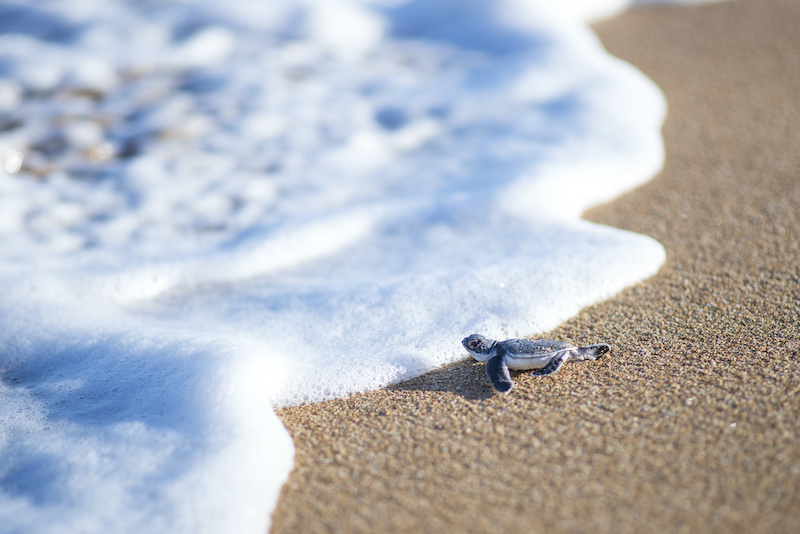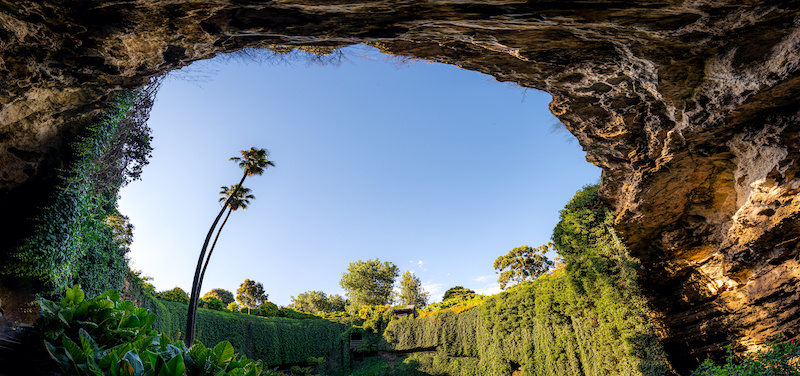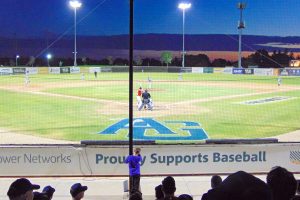Each year, millions of people from across the globe make the trip to explore international destinations and experiences that many more dream of, and it’s all in our own backyard just waiting to be explored. Did you know you can travel the world right here in Australia.
Dreaming of Mexico? Find cenote cities, pink lakes, whale sharks and the largest cacti garden in the Southern Hemisphere right here
Mount Gambier’s sinkholes and cenotes (SA)

Mexico is well known for their dramatic sinkholes, but you can also find them in Mount Gambier on South Australia’s limestone coast. The Umpherston Sinkhole, also known as The Sunken Garden, is a beautiful spot for a picnic and is also home to local possums who you can feed when they come out at dusk. Other renowned ‘sinkholes’ in the area include Hell’s Holes, Caroline Sinkhole and Kilsby Sinkhole, all of which feature plunging gardens, aquatic formations and their own distinctive features and plant life.
South Australia’s iconic pink lakes (SA)
Contrasting colours of pink, blue and green create the striking scene that is Lake MacDonnell in South Australia’s breathtaking Eyre Peninsula. Sometimes called Watermelon Avenue, it features a narrow track that divides the pink waters of Lake MacDonnell with the neighbouring blue-green waterscape. Other pink lakes in South Australia include the stunning Lake Eyre in Outback South Australia, Lake Bumbunga, which is less than a two-hour drive from Adelaide, and Lake Hart, which you can see onboard the Indian Pacific or the Explorer’s Way road trip through the Outback.
Swim with whale sharks at Ningaloo Reef (WA)
Swimming with whale sharks is one of life’s most breathtaking experiences. Ningaloo Marine Park is the only place on the planet where large numbers visit every year from April to July, so close to land. Strict protections are in place to care for threatened species and all charter boats collect data for scientists and conservationists to ensure Ningaloo’s aquatic visitors stay safe. Join a tour in Exmouth or Coral Bay and pick a boat with its own spotter plane for best results.
Thousands of turtles on Great Barrier Reef
Buggered if I know where I am: the stories behind Australia’s weird and wonderful place names
Cactus Country (VIC)
Located in Strathmerton in Victoria, Cactus Country is a 12-acre garden that is home to thousands of varieties of cacti that will transport you to a far away Mexican desert landscape, surrounded by beautiful plants and sandy walking trails that take you away to the other side of the world. There are plenty of activities for the whole family; find a new favourite plant to take home, enjoy ice cold margaritas and Mexican beers in the sun, and be sure to try the famous cactus cake and ice cream too!
Always wanted an escape to the Galapagos Islands? Visit Australia’s very own World Heritage-listed island paradise or spot thousands of nesting sea turtles in Queensland
Journey to another world at Lord Howe Island (NSW)
Scheduled to reopen in September, a visit to Lord Howe Island in springtime is like a journey into another world; birdsong fills the clean air and lush mountainous terrain rises up all around you. Bikes are the mode of transport and the top activities include walking out to Kim’s Lookout and Malabar Hill, snorkelling in the lagoon from the beach, playing a round of golf on the picturesque Lord Howe Island Golf Course, glass bottom boat tours of the lagoon and feeding wild fish by hand at Neds Beach. Keen hikers can climb Mount Gower which rises 852m (2,795 ft) from the sea. Rated one of the world’s 10 best hikes, the walk takes around eight hours and provides incredible views of World Heritage-listed Island.

Spot nesting sea turtles in the Sunshine State (QLD)
The Sunshine State is a turtle haven, with six out of seven of the world’s sea turtle species calling the Great Barrier Reef home. Every year, Queensland beaches are swarmed by thousands of baby turtles marching their way to the sea from their sandy nests. It’s a magical sight to behold that if not already on your bucket list, should be placed there immediately. Between January to March is when the majority of Queensland’s shelled residents make their way to the shoreline. Or between November and January, eggs are laid as the summer heat warms the sand to help incubate the eggs, with hatching commencing six to eight weeks later. You can spot these magical animals in the Capricorn Coast and Gladstone Region, Tropical North Queensland or Southern Great Barrier Reef.
Had plans to travel to California? Save yourself 15+ hours and head to the Sunshine State
All that glitters is gold on the Gold Coast (QLD)
The Gold Coast has an abundance of attractions and experiences to suit every type of traveller. Get your adrenaline pumping at the famous theme parks (various June and July opening dates – check websites for details), skydive over the beach (now open) or learn to surf at any one of the incredible beaches that dot the coastline, including the famous Surfers Paradise. Grab dinner and a drink amongst a range of classic American rock memorabilia at the famous Hard Rock Cafe (reopening 19 June) or enjoy a 20th century diner experience at Easy Street Diner (now open). If you’re more into lounging poolside and feeling like a celebrity, stay in the eclectic new Pink Hotel in Coolangatta or head to one of the many incredible day spas.
Check into the balmy, open-air designed Calile Hotel in Brisbane (QLD)
Touted as Brisbane’s very first urban resort, the Calile Hotel (reopening in July) fully embraces Queensland’s tropical flair. With a design aesthetic that wouldn’t look out of place in Palm Springs, this uber-cool hotel has palm trees galore with alfresco dining, cabanas, and a lot of pink. While you’re there, be sure to make a reservation at the hotel’s award-winning poolside modern Greek restaurant, Hellenika, or explore further afield and make a booking at any one of Brisbane’s new restaurants. With food precincts mixing snacking, socialising and sunshine, without conforming to a single genre, Brisbane’s new wave of restaurants, small bars and creative cafes are distinctively, well, Brisbane.
Recreate Route 66 on a road trip across the Nullarbor or Australia’s Great Outback Way
Take Australia’s longest shortcut on the Great Outback Way (WA/NT/QLD)
Once interstate borders are open, travel through the heart of Australia with a 2,700 kilometre adventure from Laverton in Australia’s South West all the way to Winton in Far North Queensland on Australia’s Great Outback Way. The trip is a true Outback experience, weaving through Western Australia, the Northern Territory and Queensland; be sure to plan your trip before you embark and map the best stops for fuel, food and sleep. You’ll be captivated by the deep ancient red landscapes, particularly from Docker River through to Laverton, enthralled by the mysterious Min Min lights and enlightened by the rich Aboriginal culture and abundant art along the way. Stay at Gem Tree for a well earned break to enjoy some fossicking, jewellery making and camp oven dinners.
Hit the road and cross the famous Nullarbor Plain (SA/WA)
If you really want to experience the beauty of Australia’s wide open spaces, the Nullarbor Plain is the road trip for you. About 1,200 kilometres at its widest point, this route includes the amazing sea cliffs of the Great Australian Bight accessible by a short detour from the highway, where you can go fishing from cliff tops or see migrating whales offshore. There is an abundance of wildlife, including kangaroos, emus, dingoes and wedge-tailed eagles, and many interesting little towns, roadhouses and restaurants to visit and stay in along the way. You’ll find caves and old gold mining towns, as well the remains of a space station that crashed to earth. It famously includes the longest straight stretch of road in Australia, and will take you three to four days to drive from Perth to Adelaide.
Grand Canyon on your bucket list? Head to our very own Red Centre and explore the towering Kings Canyon
Uluru and Kings Canyon (NT)
If you aspire to visit the world’s many wondrous rock formations, be sure to add Australia’s very own Uluru to the top of the list! Imbued with spirituality and a rich Aboriginal history, watching Uluru change colours at sunrise or sunset is one of Outback Australia’s most unmissable experiences. But there is much more than just the famous Uluru to see in the Red Centre, including the towering Kings Canyon, a three-hour drive from Ayers Rock Resort (re-opening 1 August). If you’re an early riser, trekking to the rim of Kings Canyon for breathtaking views across the rugged bluffs and gorges of Watarrka National Park for sunrise is a must-do. You can stay in the nearby Kings Canyon Resort (welcoming guests from 1 July) and enjoy gourmet meals served by firelight.
Read more of Life Begins At





















Add Comment